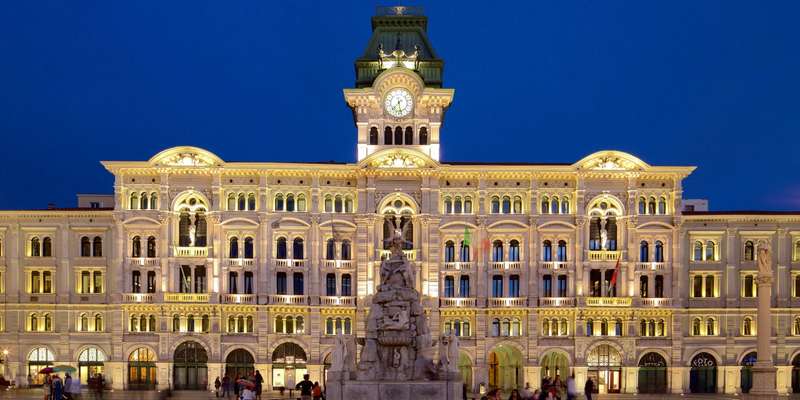- Home
- Useful Tips
- Exploring and understanding...
Trieste's Austro-Hungarian architecture tells a story of imperial grandeur, yet most visitors miss its hidden narratives. Over 70% of day-trippers focus solely on Piazza Unità d'Italia, leaving the city's most captivating facades and courtyards unexplored. This oversight means travelers forfeit the chance to stand where James Joyce found inspiration or trace the footsteps of Habsburg merchants. The challenge lies not in finding these buildings – they dominate the urban landscape – but in understanding their layered histories without spending hours researching. Without local context, the difference between a simple neoclassical facade and a revolutionary Secessionist masterpiece becomes blurred, turning what should be awe into confusion. For architecture enthusiasts, this lack of insight transforms Trieste from a living museum into just another pretty port city.


Decoding the architectural layers of Trieste's golden era
The Austro-Hungarian imprint on Trieste reveals itself through three distinct architectural dialects. The stern Neoclassicism of the 1830s Teatro Verdi gives way to the eclecticism of Palazzo Carciotti's dome, while early 20th-century gems like Casa Smolars showcase floral Secessionist details. What appears as mere ornamentation often carries coded meanings – the pomegranates adorning Palazzo Aedes symbolize prosperity, a nod to Trieste's mercantile elite. Local architects borrowed freely from Vienna and Budapest yet adapted styles to the Adriatic light, using pale limestone to reflect sunlight into narrow streets. The real magic happens when you learn to spot these adaptations: the slightly wider loggias designed to catch sea breezes, or the unusual ground-floor arches built to accommodate horse-drawn coffee deliveries. These subtle touches separate Trieste's architecture from its Central European cousins.
A self-guided walk through Trieste's architectural highlights
Begin your exploration at the Canal Grande, where the twin churches of Sant'Antonio Taumaturgo and San Spiridione showcase Trieste's religious diversity in Austro-Hungarian form. Walk towards Piazza della Borsa, pausing to compare the stock exchange's severe classicism with the playful putti on nearby Palazzo Modello. The secret is timing – arrive before 9am to see sunlight illuminate the gold mosaics of Palazzo Gopcevich without the midday crowds. Don't miss the courtyard of Casa Bartoli, where dragon sculptures guard one of Trieste's first Art Nouveau buildings. For a complete experience, follow the route in reverse during golden hour, when the setting sun sets the cream-colored facades ablaze. This two-hour circuit reveals more architectural evolution than any museum exhibit, with the added bonus of stumbling upon antique bookshops and historic cafes along the way.
When to visit for the perfect architecture photography
Trieste's light transforms its architecture dramatically across seasons and times. Winter mornings cast long shadows that accentuate the geometric patterns on Palazzo Stratti, while summer evenings bathe the seafront buildings in warm hues. April and October offer the ideal balance – soft light with fewer cruise ship crowds that obscure building facades. For photographers, the blue hour (just after sunset) turns the neoclassical columns along Riva III Novembre into silhouettes against a pastel sky. Locals know that overcast days reveal details sunny ones obscure: the delicate stucco work above doorways or the subtle color variations in Istrian stone. Midday is perfect for interior visits – the light flooding through Tergesteo's glass roof exposes the intricate ironwork most miss. These timing tricks let you capture Trieste's architectural soul without expensive equipment or professional guides.
Beyond the guidebooks: Where locals cherish hidden architectural details
Triestines guard their architectural secrets closely, but a few spots reward the curious traveler. The staircase of Palazzo Revoltella – often overlooked for its modern art museum – is a masterpiece of swirling wrought iron and Venetian-style mosaics. In the San Giacomo district, residential buildings conceal stunning stained glass transoms visible only from certain angles. The commercial port area holds surprises too; the Magazzino 26 warehouse's steel structure predates Bauhaus but shares its functional elegance. For the ultimate local experience, visit during the Bavisela spring festival when historic buildings open their normally closed upper floors. These hidden layers reveal how Trieste's architecture shaped its identity – not as a replica of Vienna by the sea, but as a unique crossroads where Mediterranean flair met imperial ambition. Understanding this transforms how you see every street and square in the city.



